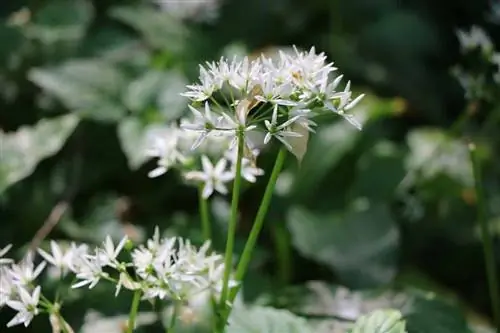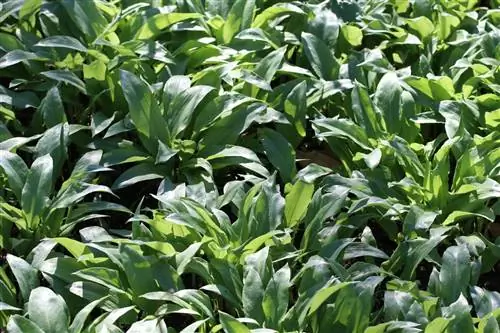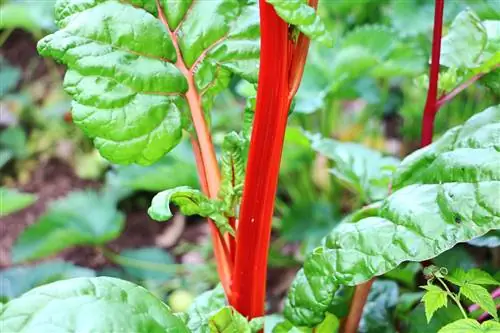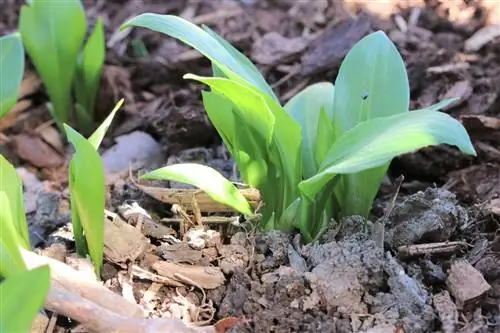- Author admin [email protected].
- Public 2023-12-17 03:39.
- Last modified 2025-06-01 06:48.
Hobby gardeners have a few weeks to harvest wild garlic. After flowering, the wild herb should no longer be picked. Read here why the flowering period heralds the end of the season and what needs to be taken into account when harvesting!
Harvest time
Spring doesn't just bring warmer temperatures, because many plants are also starting to sprout. The wild garlic season also falls in spring, although in some regions it begins as early as March. However, the exact start of the wild garlic season depends on various factors. These include, among other things, the regional climate and weather conditions. Because the milder the winter, the wild weeds can be harvested. The further north the location is, the later the harvest is possible. The harvest time lasts around 6 to 8 weeks, although hobby gardeners should take the following into account:
- Best harvest time until the beginning of May
- Very good taste
- Pleasant intensity
Why not harvest later?
The wild garlic harvest season usually ends with the onset of flowering, which is why the season usually lasts until the beginning of May. It can still be harvested after flowering, but this is only recommended to a limited extent. After flowering, the leaves become more fibrous and the flavor migrates into the wild garlic flowers. This means that the wild herb significantly loses its taste. It is poisonous - even after flowering - but not, which is why it can still be eaten in principle.

Tips for harvesting
If you want to harvest the popular wild herb, all you need is a cloth bag and a sharp cutting tool. The latter is essential because the leaves should always be carefully cut off and never torn out. This ensures that the cut is as clean and small as possible so that the plant can regenerate quickly. Additionally, the following should be taken into account when harvesting:
- Only cut off 1 - 2 leaves per plant
- Plants can regenerate and spread better
- If possible, only collect from large stocks
Wild wild garlic can generally be picked, but not everywhere! Harvesting is prohibited in nature reserves and natural monuments. In addition, it should be noted that in some federal states the plant is on the list of endangered species and harvesting is therefore also prohibited. Among other things, the wild herb is classified in some federal states as follows:
- Threatened with extinction: Brandenburg and Hamburg
- Extremely rare: Bremen
- Potentially endangered: Schleswig-Holstein
Distinguishing wild garlic from lily of the valley
Wild garlic and lily of the valley are visually similar, which is why they are often confused when harvesting. However, this is definitely dangerous because, unlike wild garlic, lilies of the valley are poisonous! To avoid confusion, the supposed wild garlic should always be checked for certain characteristics that distinguish it from the poisonous lilies of the valley:
- Underside of leaf: matt
- Smell: typical garlic smell
- Root: Onion
Info:
The autumn crocus and the spotted Aaron's rod are also often confused with the forest garlic.






